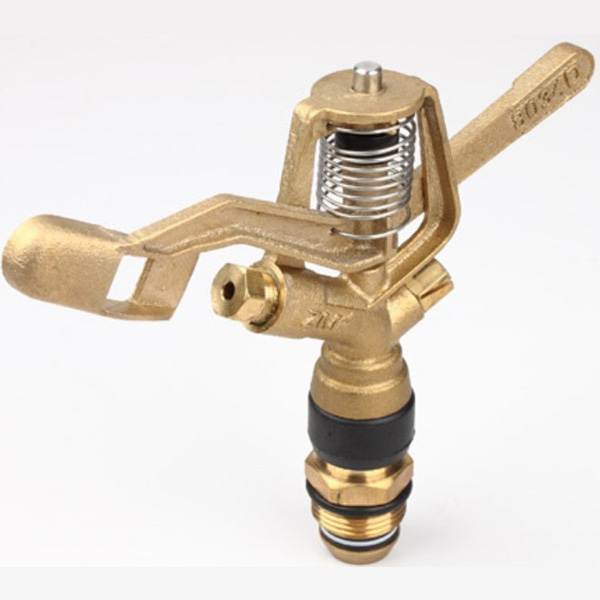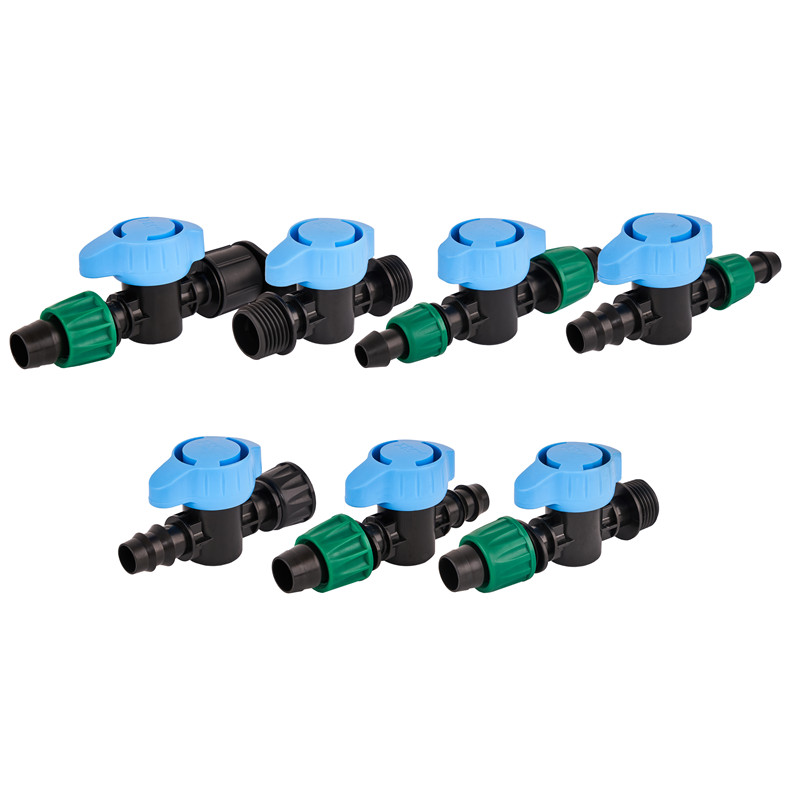Get the latest news delivered daily!
Get the latest news delivered daily! Mikro Sprinkler

If you are considering the installation of an irrigation system, you will want to keep in mind the options below. In fact, you may wish to install a variety of systems, depending on the plants you are growing in the different areas of your front and backyard gardens.
Drip irrigation: This is the system that is the most water-efficient since every drop of water goes directly to plant roots. It is now possible to grow anything with a drip system, including lawns, thanks to subsurface drip irrigation (SDI). I have seen SDI at work in shopping centers. One of its benefits is elimination of liability issues that come with conventional drip irrigation where drip lines are exposed on the soil surface and thus create a trip hazard,
You may wonder why grass roots don’t grow into SDI emitters (holes through which water drips). Two different strategies are employed. One strategy, such as that utilized by Netafim, the Israeli company that invented drip irrigation, is to outfit each emitter with a “root intrusion barrier” that prevents entry of grass roots. The “Copper Shield Technology” of Rain Bird also blocks roots from entering emitters. Formerly, it was a common practice to incorporate herbicide into emitters to provide chemical control of intrusive roots but that strategy has largely been abandoned by manufacturers of SDI tubing today.
In any drip system, if you have a light, fast-draining sandy soil you will need your in-line emitters spaced more closely together than where soil is of a heavier clay texture. There are usually two to three different emitter spacing options available, whether conventional drip or SDI is the system you choose.
Mini or Micro sprinklers: These sprinklers are attached by so-called spaghetti tubing to drip lines and function as conventional spray sprinklers, albeit much closer to the ground and with a much smaller radius of water application than their bigger cousins. Although not as efficient as drip emitters due to uneven application over a given area and water loss due to wind, they are widely used in orchard irrigation. A distinctive advantage of mini sprinklers over drip irrigation is that you can immediately notice if they are spinning or not. With drip irrigation, it may not be apparent that emitters are clogged until your plants begin to wilt.
Conventional sprinklers: When watering a lawn with conventional spray sprinklers, they should not be left running for more than five minutes at a time. The typical, compacted soil under a lawn cannot absorb more than 0.2 inches of water in an hour and that’s the same amount of water delivered through spray head sprinklers in just five minutes; after that, water either puddles until it evaporates or runs off. Los Angeles area lawns of cool season grasses, which require 2 inches of water per week during the summer, should thus be given ten waterings per week, each five minutes in length, divided by the number of days in the week that you water.
Although the Metropolitan Water District has eliminated watering restrictions for its seven million Southern California customers, you still need to check with your local water supplier to see which, if any, restrictions are still in place in your area. LADWP has just increased its allowable weekly watering days from two to three. If your address ends in an odd number, you can water Monday, Wednesday, and Friday, while if your address ends in an even number, your sprinkler days are Sunday, Tuesday, and Thursday. Conventional spray sprinklers are permitted to run for eight minutes per station on each of these days. If you use low precipitation rate nozzles with these sprinklers, you can extend watering to 15 minutes per station. Still, this will probably not be enough water to keep a tall fescue lawn (such as Marathon) lush, although tougher grasses such as Bermuda and St. Augustine, while somewhat stressed, would probably be okay under such a watering regime. However, there are no restrictions on drip irrigation so if you had a SDI system under your lawn, you could water to your heart’s content.
Overspray or runoff onto sidewalks and driveways is a violation of LADWP policy where irrigation regulations are concerned. Watering is only allowed before 9 am and after 4 pm, but you can water with a hose, as long as it has a nozzle shut-off, seven days a week during these permitted times.
Soaker hoses: These are the lazy man’s choice for watering flower or vegetable beds. You just screw the end of a soaker hose onto your hose bib (faucet) and turn it on. Water is emitted through tiny pores all along the hose, which is manufactured from recycled rubber, polyurethane, or flexible PVC. The disadvantage of a soaker hose is that it delivers the greatest volume of water near the faucet, with output decreasing down the length of the hose.
Watering wand (attached to a hose) with a shut-off nozzle: If you water with a hose, make sure you do so through a watering wand with a shut-off nozzle so you do not waste water while moving through your garden or while watering your containers, one after the next.
Keep in mind that another option for increasing our garden water supply involves installation of a gray water system. Such a system recycles water from laundry machine, bathroom sink, bath, and shower, but not the kitchen sink.
California Native of the Week: Miner’s lettuce (Claytonia perfoliata) was named for its consumption by miners during the California gold rush. Its high concentration of vitamin C made it the ideal vegetable for the prevention of scurvy. The native range of miner’s lettuce is considerable, stretching from Mexico through California up to British Columbia. Its taste resembles that of spinach, as does its crunch, and it is similarly constituted: Like spinach, it contains oxalates so if the plant is eaten to excess, kidney problems can result. Nevertheless, it is probably the most suitable California native green to eat raw in a salad although, like spinach, it can also be cooked. While it is generally at its prime in the spring, it can persist through self-sowing in Southern California as long as it is grown in the shade. We are probably a month away from its planting season but now would be the time to order its seeds, which are widely available through online vendors. It will be most suitable for the fall semi-shady vegetable garden where lettuces and other greens are grown. It requires only forty days from sowing its seed to the maturation of a harvestable crop of leaves and flowers. All plant parts are edible except for the roots.

Micro Rain Sprinkler If you have an efficient irrigation system that others should know about, send details to joshua@perfectplants.com . Your questions and comments about any plant species. as well as gardening tips, practices, or problems that deserve wider recognition are always welcome, as are your photos.